Sometimes, things just aren’t what they seem to be.
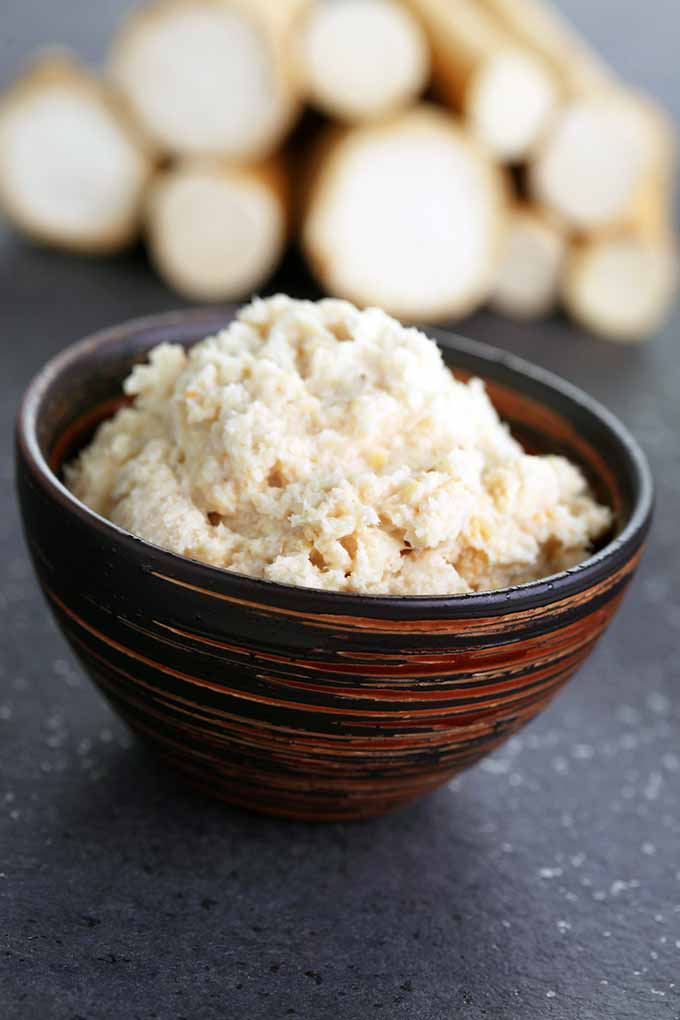
Would you expect such a hot and tangy flavor to come from a root that could possibly be mistaken for a parsnip?
That is the tricky thing about horseradish.
The innocuous appearance and lack of any pungent aroma coming from this odorless veggie might lead to misguided assumptions.
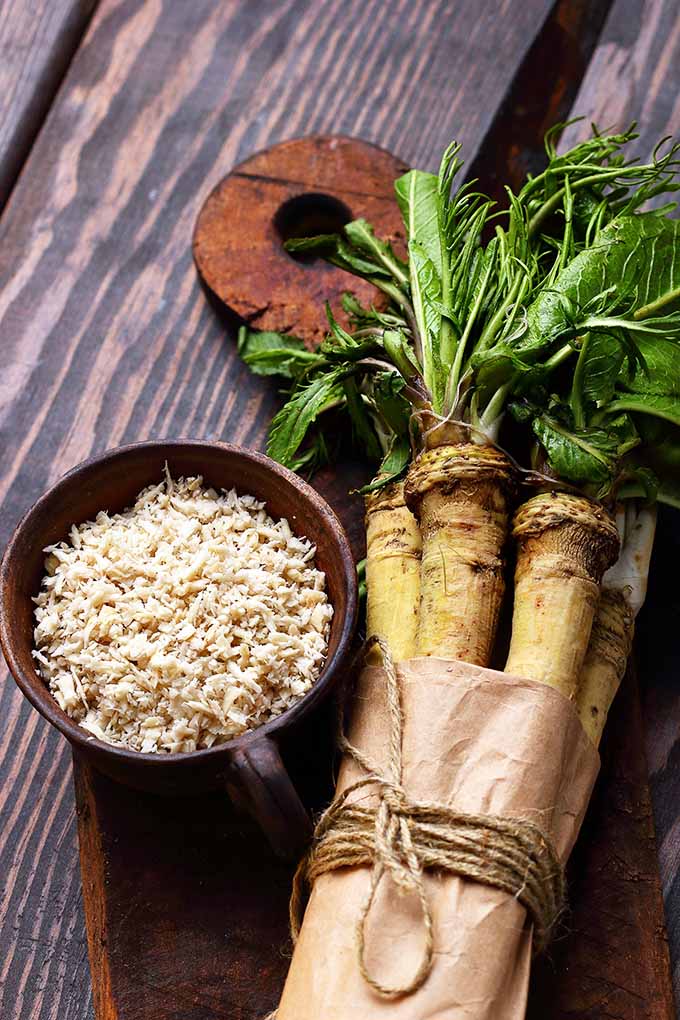
But at the moment of cutting, breaking, or grating it, a chemical reaction between the oils found in the root will be unleashed, and a spicy fragrance will begin to wind its way into your eyes, nose, and throat.
The same goes for wasabi, the so-called Japanese horseradish.
This specialty ingredient, which you probably know best from Japanese restaurants (or think you know… more on that later!), provides an even more intense tasting experience.
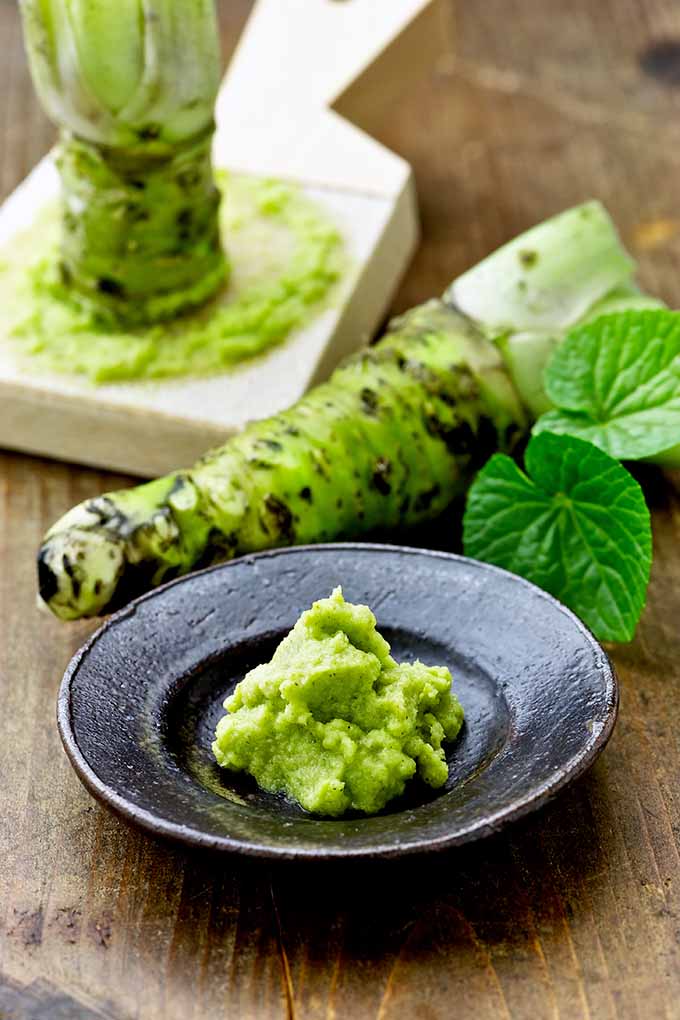
It is these hot characteristics that make both of them such special, fantastic ingredients for use in various recipes.
Though they share the same pungent flavor components and root-like appearance, are these two spicy plants the same thing?
Let’s take a closer look…
Well? Are They the Same?
Nope – they are not the same thing!
Though they are from the same Brassicaceae family, and share a similar strong flavor profile and visual characteristics, they are of a different species, and are therefore completely different plants.
Another major difference is that we eat different parts of these plants. The horseradish root is what we typically consume, while the wasabi stem, or rhizome, is the main part of the plant that is eaten.

Concerning their flavors, both products are hot and tangy.
But the Japanese wasabi is much more intense than the other common root product, and more highly prized.
While fresh horseradish is cultivated globally, and premade products made from this root are readily available to buy, the wild variety of wasabi is extremely rare.
Japan is the only area where the wild variety grows, near the shores of natural cool creeks, and it takes a few years to reach maturity.
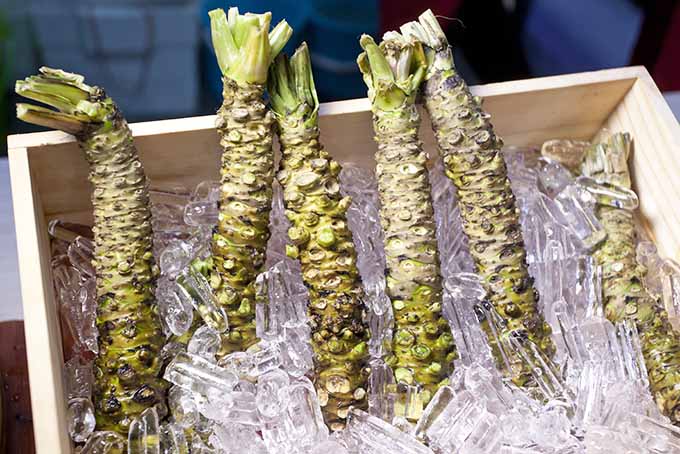
As most fans of the stuff do no want to wait this long, and the global demand is huge, thanks to an ever-expanding sushi market, it is also produced industrially – but this is an inferior product, to say the least.
Wily Wasabi: A Tasty Ruse
If you take a look at the snack shelves at the grocery store, it’s difficult to ignore the popularity of wasabi’s flavor in our foods.
You’ll find flavored pastes and powders as well as nuts, chips, and lots of other snacks that presumably contain this Japanese rhizome.
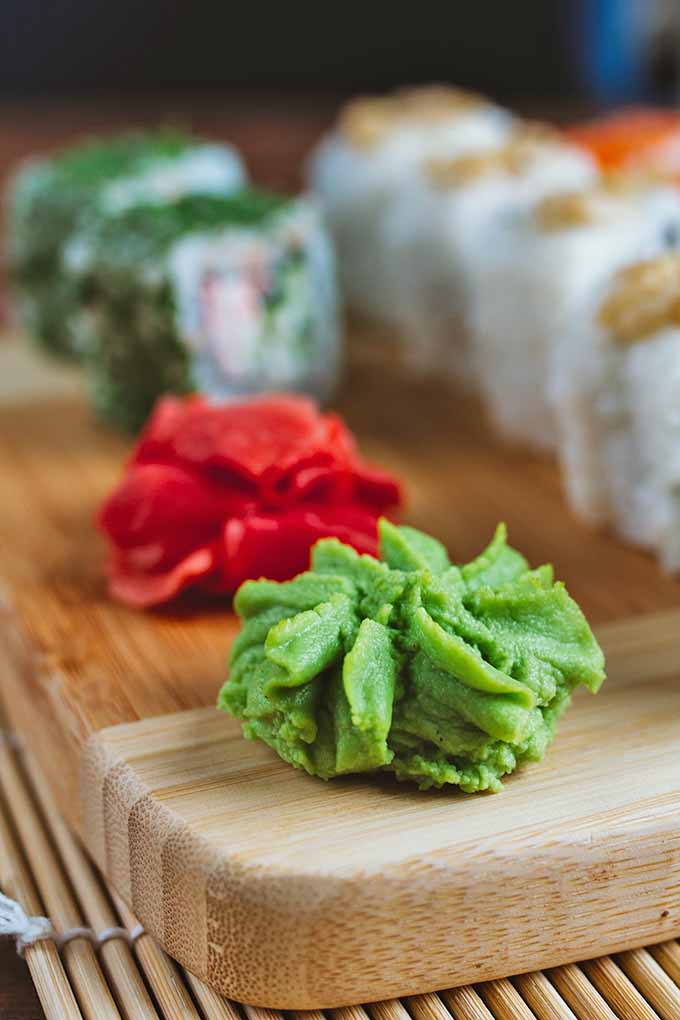
In fact, it’s more likely than not that the green blob served to you alongside a maki roll or available in tube form at your local grocer is actually made from horseradish that has been dyed green!
What!?
Yup, it’s true.
Horseradish is far easier to cultivate, and is therefore more readily available as an ingredient to use in condiments that require that special spicy zing.
Because of its similar flavor profile, horseradish is a common replacement for the fresh wasabi plant.
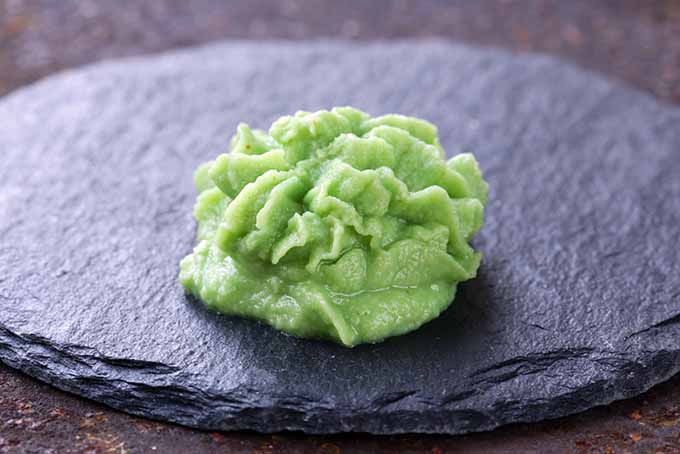
Odds are that you have never actually tasted the genuine rhizome, as it’s a rarity outside of Japan.
Your chance of finding the fresh version in supermarkets is extremely rare, due to its exceptional growing conditions.
Since the industry is always on the lookout for easier methods of production, it’s important for us to always pay attention to the list of ingredients – keep a close eye on the ingredients when you are grocery shopping if you’re going to buy this Japanese specialty.
Don’t Be Fooled!
If we haven’t already made this clear, it’s likely that your presumed “wasabi paste” is actually a combination of horseradish, mustard oil, and green food coloring!
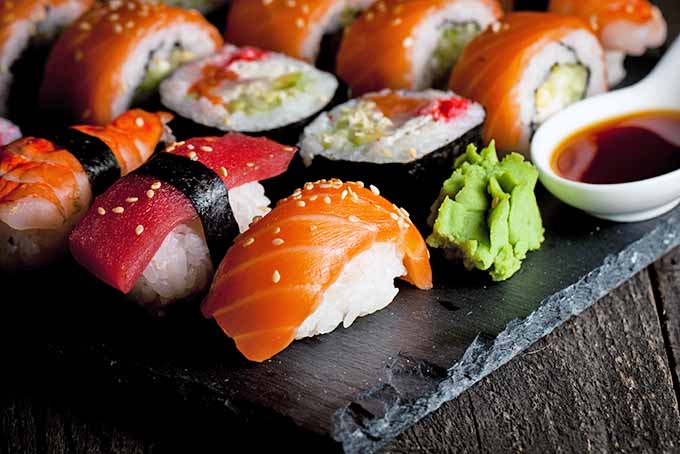
If you want to experience the taste of products made with the real stem plant, carefully review the ingredients list the next time you are at the grocery store.
Or, perhaps better yet, you can even use the fresh plant!
We’ll help you every step of the way when buying, prepping, storing, and using fresh wasabi in your own kitchen.
But if you can’t get enough horseradish, we are happy to provide our assistance. Read our article to get more info on this rowdy root.

There’s no denying that both versions provide a tangy characteristic flavor to many dishes. Give both a try, and add some heat and a bit of bite to your sandwiches, fish dishes, or homemade soups!
Just be careful when doing your shopping to get the most authentic culinary experience!
Have you ever dealt with the horseradish/wasabi conundrum? Tell us what you think about these two fiery ingredients in the comment section below!
And get your spicy kick on and fire up your cooking with all of Foodal’s herb and spice culinary guides or check out our Ultimate Guide to Kitchen Herbs and Spices.
Photo credit: Shutterstock. With additional writing and editing by Allison Sidhu and Nikki Cervone.
The staff at Foodal are not medical professionals and this article should not be construed as medical advice. Foodal and Ask the Experts, LLC assume no liability for the use or misuse of the material presented above. Always consult with a medical professional before changing your diet, or using supplements or manufactured or natural medications.
About Nina-Kristin Isensee
Nina lives in Iserlohn, Germany and holds an MA in Art History (Medieval and Renaissance Studies). She is currently working as a freelance writer in various fields. She enjoys travel, photography, cooking, and baking. Nina tries to cook from scratch every day when she has the time and enjoys trying out new spices and ingredients, as well as surprising her family with new cake creations.

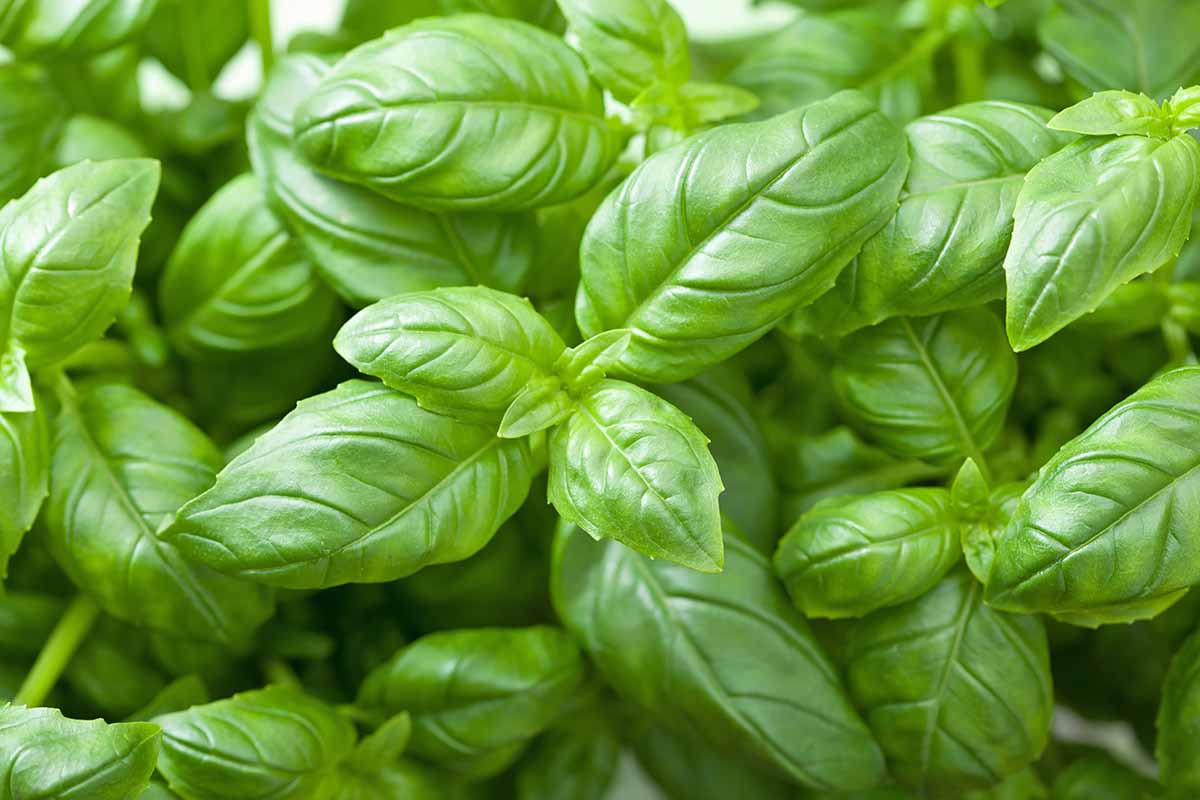
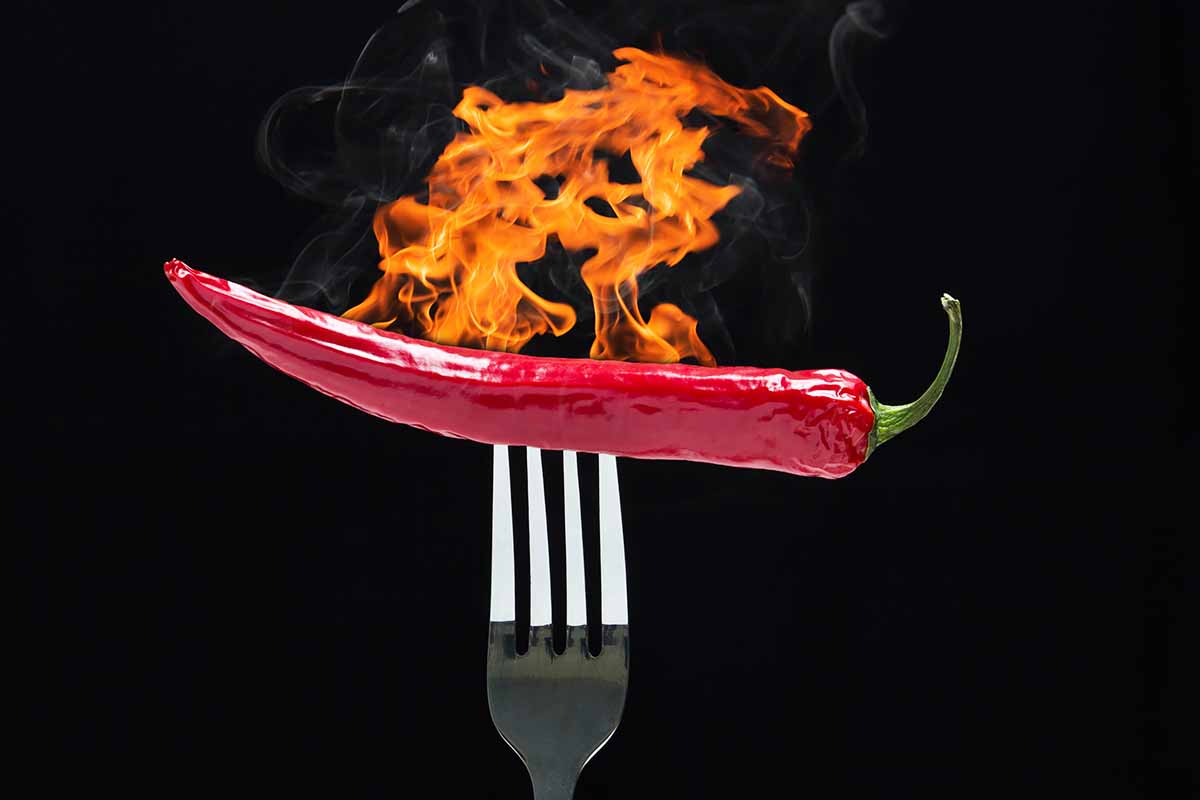
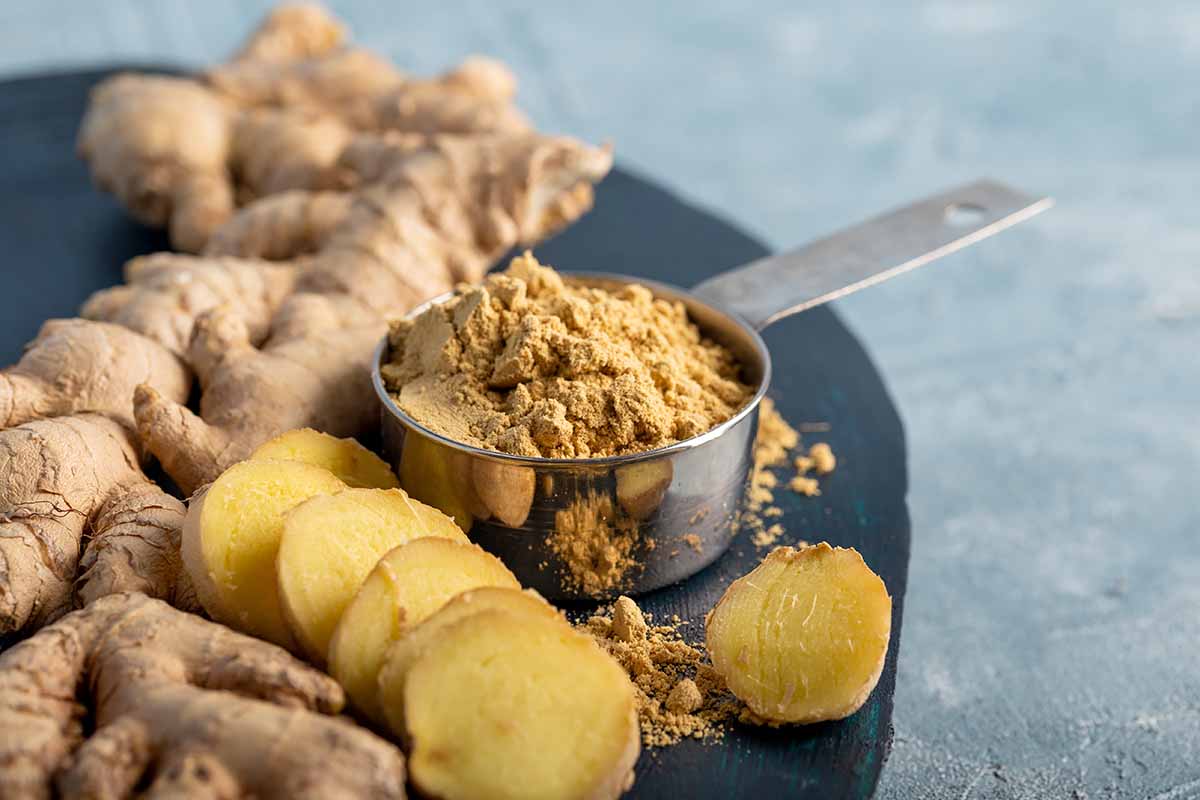
Hi,
Is it possible to vacuum-seal the horseradish?
Best regards,
Kalev Välja
Sure, you could vacuum seal and freeze it for longer storage.
Great article. I wish I had read it before buying fake wasabi from Amazon.